15 Must have features for an Ecommerce Website: How to Start an Online Store for your Business
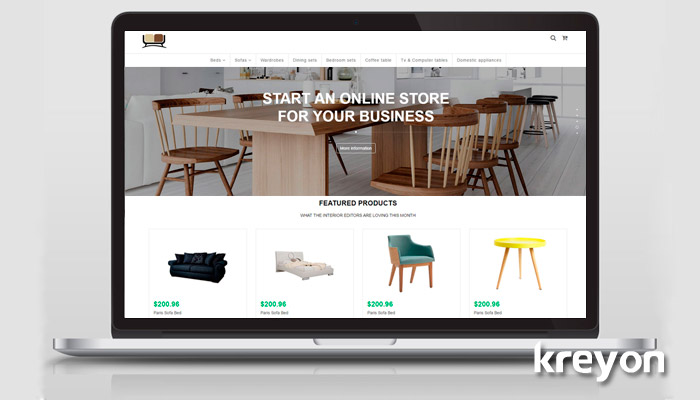
Selling online is no longer a luxury for businesses; it has become a need. The ecommerce wave has changed the way people buy & sell things. Today businesses are looking at avenues for growth and ecommerce website connects them to users worldwide. The ecommerce website has emerged as a great source of promotion, revenue and growth for businesses. An online store allows the business to sell their products across the globe from one place. It helps them to add and manage unlimited categories, products and orders, helping them to scale operations at ease. Here is a look at some of the must have features for an ecommerce website that can help you to sell your products online:
1. Strong Brand Differentiation with compelling Designs :
The renowned ecommerce companies provide options for businesses to sell through their platforms. However, businesses have a distinct advantage in creating their own customised ecommerce websites. With a custom ecommerce portal, these businesses can express and their brands. They can create strong differentiation from their competitors. The visual appearance & design of the ecommerce site creates an impact on how the brand is perceived by the users. The personality of the business, its core values and differentiation can be communicated effectively with a designer portal. The internet has changed the rules of the game; today brands built on internet are ruling the world. An ecommerce website can bring tremendous ROI for a business, especially when the brand offers great products.
2. Multi Device Optimisations :
The multi device optimisations are a must have functionality for all the corporate websites. It becomes even more important for an ecommerce site to ensure that users are able to browse and buy products from their mobile devices. The multi device optimisation should ensure that users have a consistent experience of your portal across devices, browsers and platforms. The designs should keep in mind the usability aspects and offer app like experience for the mobile users. The designs of the buttons, layout and overall visual look & feel should make it seamless for the user to purchase products.
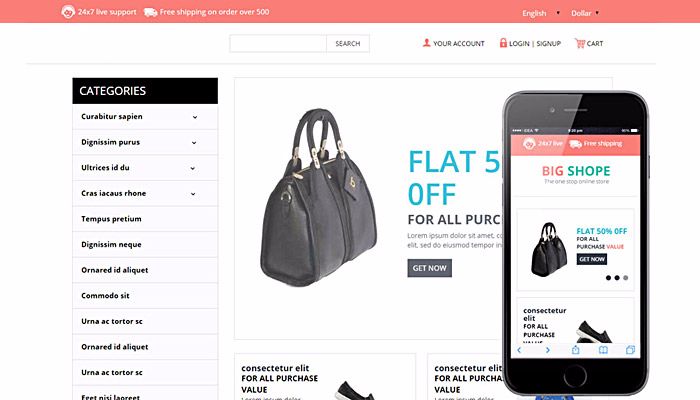
3. Shopping cart, Purchases & Payments :
The ecommerce portal with a very simple navigation offers intuitive and seamless shopping experience. The objective of an ecommerce portal is to increase sales for the products. A minimalist design with shopping cart, multiple payment options makes it easier for the users to purchase products. The choice of multiple payment options increases the probability of transactions on the site. The secure checkout and multiple payment options are key drivers that prompt people to purchase on ecommerce sites. Once the payment is done, all the orders can be tracked from the admin panel. The total number of orders, their delivery status, payments collected and other details are available for the administrators.

4. Special Offers & Discounts :
One of the key aspects of an ecommerce portal is its unique offerings and deals offered to the customers. The ecommerce portal should have provisions to create the deal of the day, offer discounts on selected products and have bulk booking offers. These offers can be regulated from the admin panel of the portal. The special offers and discounts on the products have an impact on the sales of products. The volume of sales generally increases with deals, discounts and special offers. The designated authorities can analyse the impact of offers on sales and overall business.

5. International taxation & Shipping :
Running a global business can be complicated with various international taxations and regulations. The ecommerce portal can be configured to handle these complexities for the business. The operations can be simplified where all invoices and purchase orders are configured to charge the taxes according to the locations of the clients.
For shipping, the businesses can charge additional costs for delivery based on the package size, package weight, departing country, destination country, insurance & custom costs etc. The charges can be calculated based on customers delivery address. Some international courier providers offer APIs and services for dynamic calculation of the shipping costs for these parcels. They can be integrated to the ecommerce site to offer complete solution for the customers. The delivery process for the products can be tracked through the admin panel. Customers can also track the status of their orders online.
6. Products Galleries, reviews & other details:
The product galleries should be compelling for the visitors. Beautiful images of the products with trendy layouts add to the look & feel of the site. The complete product specifications and details should be provided to the users. The customer reviews and feedback are also helpful to build credibility. Options for zooming effects, different colors and sizes are also popular for ecommerce sites. Brands are also experimenting with innovations using technology. Some of the retail stores provide virtual tools where users can try various dresses and picture themselves in those outfits.
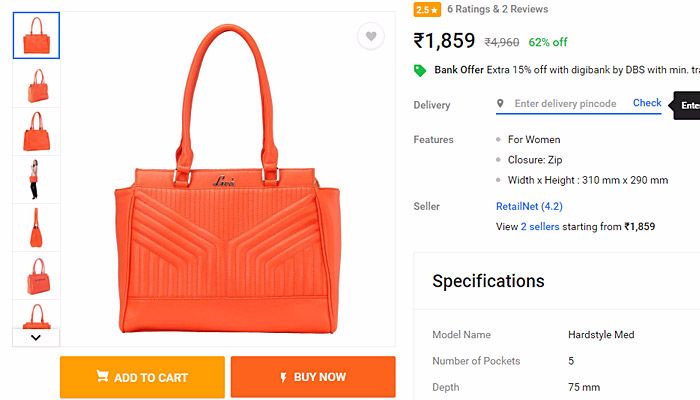
7. Manage Inventory, categories & online store :
The number of products that can be sold through the online store can be organised through categories and subcategories. These categories and subcategories can be managed through the admin section of the portal. Businesses can also evaluate the demand for products in various categories. The decisions to add new line of products, categories can be driven by their demand. The online inventory management helps an organisation to build a demand driven operational model. The realtime availability of stock and pricing for various products can also be managed through the online store.
8. Customer login & registration :
Online merchants that require the users to fill too much information end up losing many of them. When a customer is expected to make the purchase, things should be very easy. The customer sign-up options can be facilitated via google, FB, Twitter logins to reduce time and efforts. A one or two step sign up process is all it should take the customer to make a purchase. Once the customer creates the account, they should be able to see the order history, delivery details and other recommendations based on their preferences. The ecommerce portal should be backed by the strong analytics platform for studying the buying patterns of its customers.
9. Search, Sort & Filter options :
With so many categories, products and choices, it is easy for the user to get lost on an ecommerce website. However, the best ecommerce portals ensure that they have an intuitive search, which helps the users to locate the products they’re looking for. The searching and sorting options are one of the most crucial aspects of the online store for improving the user experience. The site should allow the user to search products, sort them by categories, color, size, price etc. When products or items are not available, users should be able to request items on the portal. These requested items can be tracked by the back end or the admin interface of the portal.
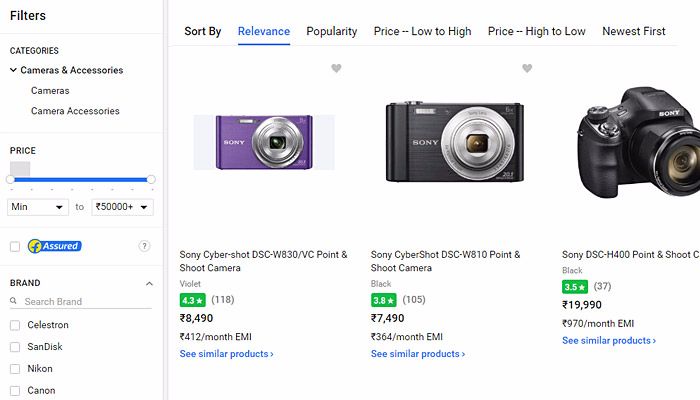
10. Bestsellers & featured items :
The bestsellers and featured products section highlights the key items offered by the business. In a dynamic environment, the most popular products & items can be featured. The online merchant can decide to highlight some of their premium products as featured listings on the home page itself. The number of the featured items can be configured from the admin panel. The bestsellers can be generated automatically based on the sales volumes of the products. The demand for the products is likely to be higher when they’re featured on the home page. The trending products or recommendations can also be highlighted on the portal based on users browsing history & purchases.
11. Customer Loyalty & Discounts :
An online portal allows the business to track the details of their customers. For every customer, the ecommerce site maintains a distinct user profile. All their previous purchases, transaction history and most frequently visited pages can be stored for each customer. This feature is extremely useful for offering personalised recommendations and also offer discounts to loyal customers. The customer loyalty, lifetime value and discount details are immensely useful for business. The administrator has access to all these details. Businesses can figure out their most valuable customers, their locations, age groups, spending habits and other details with this data.
12. Dynamic Content Manager :
High quality content differentiates and provides authenticity to a brand. The top businesses use content to build rapport with their users. The content represents the voice of the brand. The ecommerce site with capabilities for dynamic content management helps to establish trust. Images, videos, blog articles, lists, how to articles, animations, audio podcasts are pieces of contents that can be published on regular basis. The ecommerce sites can create content in tune with their brand image to engage users. The content also helps the site to rank higher on search engine listings.
13. Returns & Refund Policy :
When customer makes a purchase and finds an issue with the product, they should be able to return the product & get refunded. The returns and refund policy should be transparent & hassle free. The reputation of an online brand is crucial for its success. The process to return the product should be seamless for the customer. The refund or the replacement of the product should be done promptly. The ecommerce website should take care of all this with utmost ease. The administrator can track the percentage of returned products. Online store makes it easy for the analysis of returned goods & ensure proactive steps to circumvent this.
14. Order Management :
An online store not only provides an avenue for additional sales, but also organises information. When a new purchase is made, the administrator gets notified about the order on their mobile or email. The order management can be done through this portal to manage parameters like total number of orders, orders delivered late, turnaround time for delivering products, average number of orders per week, total value of the orders, orders by location etc. When the customer completes the purchase, the order status is reflected on the back-end. The businesses can track the status of the orders and close them upon successful delivery.
15. Customer Care & Support :
People are used to shopping from the brick & mortar stores. They find people to guide them through their purchasing. They can ask questions, get personalised attention and recommendations during the purchase. The online stores should also offer similar experience for the online buyers. The users should be able to ask questions related to the product, get personalised recommendations and be able to interact with product experts as per their needs. A good ecommerce portal ensures that it provides interactive support options via live chat, toll free numbers and personalised attention for faster resolutions. An ecommerce portal automates actions taken for product returns, refunds or delayed delivery for faster resolutions.
Forrester says the number of consumers browsing and buying online will hit 270 million by 2020, driven largely by activity on mobile devices. As per US commerce department, online sales in US alone was $335 Billion in 2015 & expected to be $523 Billion in 2020. The ecommerce represents one of the biggest opportunities for businesses to expand their sales globally. An ecommerce platform for your business can help you to create global visibility, improve your reputation and sales.
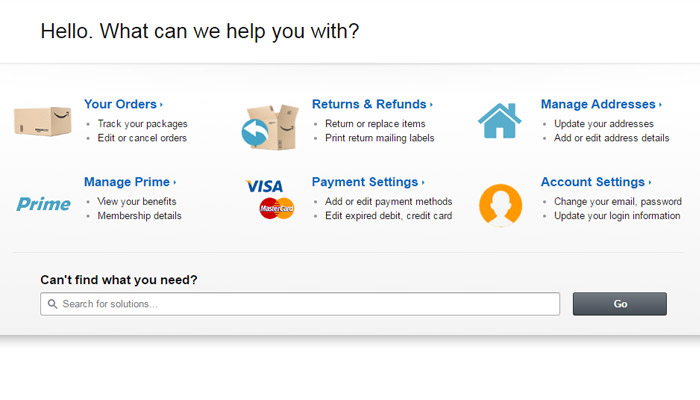
Kreyon Systems ecommerce development services is helping clients manage their online stores and business digitally. Please reach out for any assistance or query.
